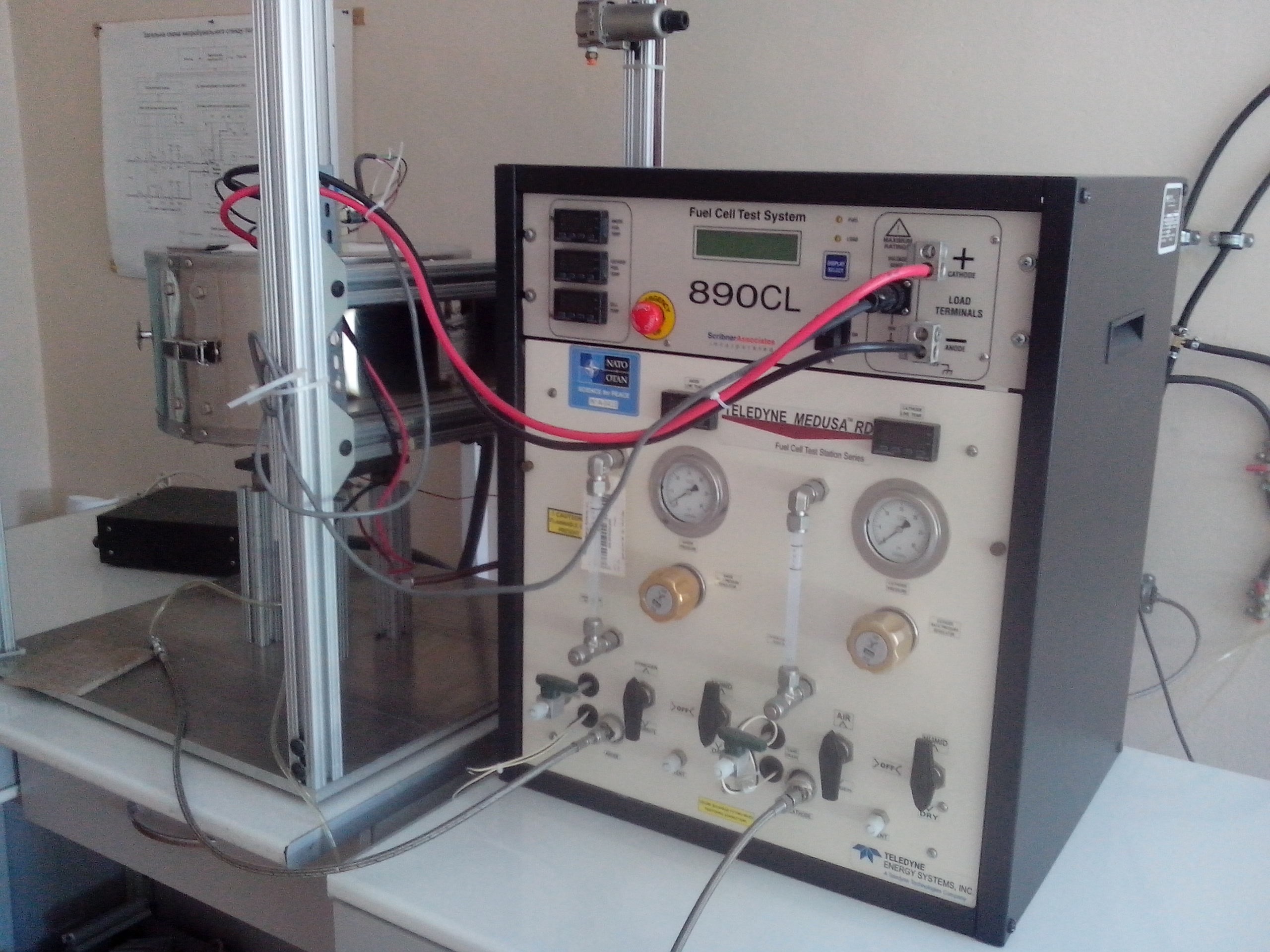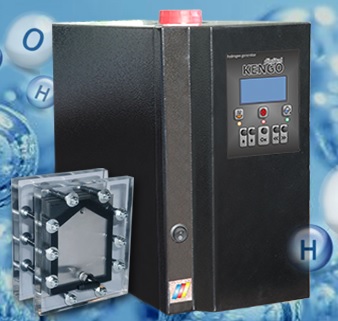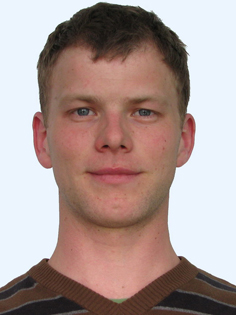Еlaboration of tape-casting technique for ceramic fuel cell production

Fig. 1 - SOFC electrolyte films of different thikness made of zirconia stabilized
with 8-mol.% yttria powder (8YSZ) developed newly.
|

Fig. 2 Appliance for fuel cell testing – Scribner Teledyne Medusa RD 890CL
|

Fig. 3 Appliance for hydrogen production by Hydrogen Kengo-Digital 15.50
|
Area of application
Typically, solid oxide fuel cells (SOFCs) are used as stationary power equipment for decentralized energy supply.
SOFCs are considered to be the most promising among other types of fuel cells for widespread application due to their
high efficiency of fuel chemical energy conversion of into electrical and heat ones, fuel flexibility (methane, hydrogen, CO etc.);
they do not need in platinum group metals as catalysts. Owing to the modularity of fuel cells, power sources based on fuel cells can
be principally of any capacity (from microwatts to megawatts) and optimized for any application.
Brief description
The general research plan foresees elaboration of regimes for the manufacturing of SOFC using tape-casting technique, structure
optimization of electrolyte and electrodes, choosing of optimal modes of SOFC operation and development of the operational suitability
of cells to be used in the energy-generating stacks. The structure optimization of electrolyte consists of the development of new electrolyte
material based on zirconia stabilized with complex dopants Y2O3, Sc2O3, CeO2 (YScCeSZ). The choosing of SOFC operation modes includes the
study of the influence of different fuels (hydrogen, carbon monoxide, methane, and syn-gas), their flows and concentrations, as well as
changes of oxidant (air) flow on the electrical properties of SOFC.
Expected results
The development of new SOFC electrolyte material should allow reducing SOFC operation temperature while maintaining its high efficiency.
Moreover, elaborated regimes of SOFC manufacturing, its testing and operation conditions will be a prerequisite for the creation of power systems
based on SOFCs for a wide variety of applications.
Advantages
Today, the tape-casting technique is considered as the most promising technology for the manufacturing of planar solid oxide fuel cells.
It is the method that guarantees a relatively easy transition from laboratory development to industrial production. The project also focused on
the development of new SOFC electrolyte material.
The improvements of electrolyte material should significantly enhance the efficiency of the entire SOFC.
Competitor
Ceramic Fuel Cell Ltd. (Australia),
Solid Power (Europe),
Julich Research Center (Germany),
Ceres Ltd (UK)
State of development
The method of manufacturing of SOFC electrolyte via the tape-casting technique has been developed. The technique of applying electrodes
(anode and cathode) to the electrolyte and modes of their joint sintering are currently being worked out. The influence of the oxidant flow changes
at a steady stream of hydrogen in argon as a fuel and the change of the flow of hydrogen in argon at a steady stream of oxidant is studied.
The optimal flows of fuel and oxidant were determined; the comparison of the influence of hydrogen in argon and carbon monoxide on the electrical
properties of the SOFC under the same operating conditions are carried out.
Intellectual property
Institute- Executor: Frantsevych Institute for Problems of Materials Science of National Academy of Sciences of Ukraine
Project 18 «Elaboration of tape-casting technique for ceramic fuel cell production»
Tel. +380 44 205 79 76
+380 95 723 15 18

 Brodnikovskyi Yehor
Brodnikovskyi Yehor